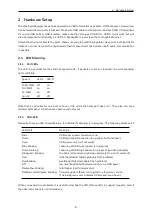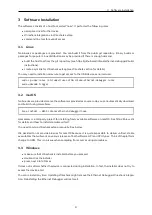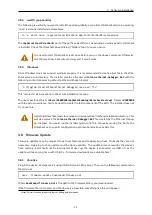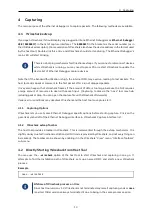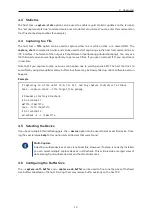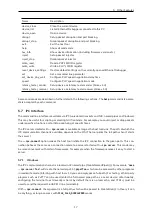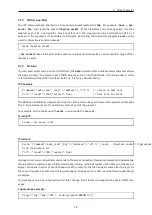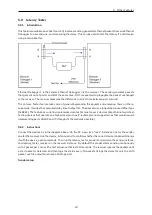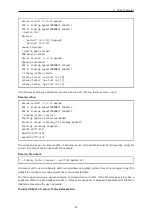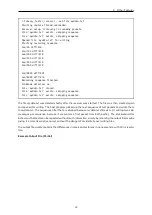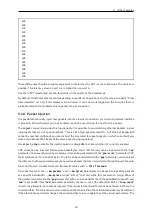
5 Other Features
Device serial1 / 4:2:15 opened.
PHY A: link=up speed=1000MBit (master)
PHY B: link=up speed=1000MBit (master)
> device_list
Devices:
- 'serial1' (4:2:15) [opened]
- 'serial2' (4:2:16)
Found 2 devices.
> device_open serial2
USB device closed.
Device serial2 / 4:2:16 opened.
Opening succeeded.
PHY A: link=up speed=1000MBit (slave)
PHY B: link=up speed=1000MBit (master)
> latency_tester_sender
Latency tester: new test run (0)
Latency tester: new test run (1)
Latency tester: new test run (2)
If continuous sending is not desired, you can also just run ”latency_tester_sender --once”.
Receiver setup
Device serial1 / 4:2:15 opened.
PHY A: link=up speed=1000MBit (master)
PHY B: link=up speed=1000MBit (master)
> latency_tester_receiver
Starting capture thread succeeded.
Receiver setup. Listening to incoming packets.
Starting recording sequence...
seq=99 diff=-410
seq=199 diff=-410
seq=299 diff=-410
The output gives you an idea whether it actually works. Actual data should be retrieved by using file
output. File output can be used with for example:
Receiver file output
> latency_tester_receiver --out-file mydata.txt
You may want to use an absolute path here (perhaps using drag & drop from a file manager to get the
path) if the concept of working directories is too uncomfortable.
The file is opened when a sequence starts, and closed when it ends. If the file already exists when a
sequence starts, the file is
not
overwritten. Instead, the sequence is skipped repeatedly until the file is
deleted or moved by the user. Example:
Terminal Output of Latency Tester Example Run
21


